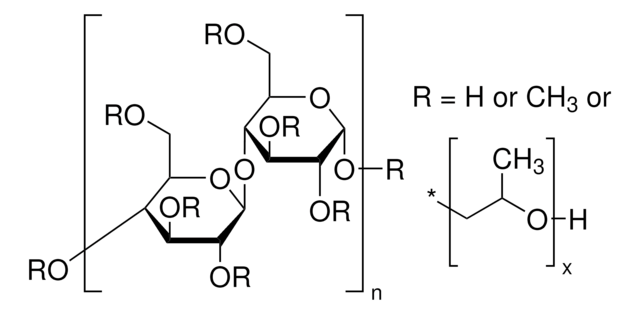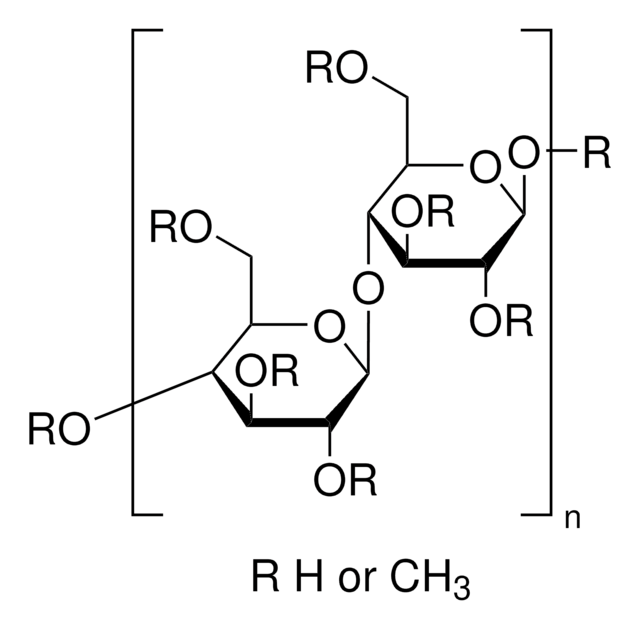H7509
(Hydroxypropyl)methyl cellulose
viscosity 2,600-5,600 cP, 2 % in H2O(20 °C)(lit.)
Synonym(s):
2-Hydroxypropyl methyl cellulose ether
About This Item
Recommended Products
biological source
plant
Quality Level
form
powder
mol wt
~86 kDa
color
white to off-white
viscosity
2,600-5,600 cP, 2 % in H2O(20 °C)(lit.)
solubility
water: 10 mg/mL, clear to very slightly hazy, colorless
storage temp.
room temp
Looking for similar products? Visit Product Comparison Guide
General description
Application
- as a viscosity modifier in the preparation of printable ink
- as a viscosifier in the preparation of hydroxyapatite (HAP) suspension
- in the preparation of HPMC gels and composite gels
Biochem/physiol Actions
Features and Benefits
Other Notes
Storage Class Code
11 - Combustible Solids
WGK
WGK 1
Flash Point(F)
Not applicable
Flash Point(C)
Not applicable
Personal Protective Equipment
Certificates of Analysis (COA)
Search for Certificates of Analysis (COA) by entering the products Lot/Batch Number. Lot and Batch Numbers can be found on a product’s label following the words ‘Lot’ or ‘Batch’.
Already Own This Product?
Find documentation for the products that you have recently purchased in the Document Library.
Customers Also Viewed
Our team of scientists has experience in all areas of research including Life Science, Material Science, Chemical Synthesis, Chromatography, Analytical and many others.
Contact Technical Service



